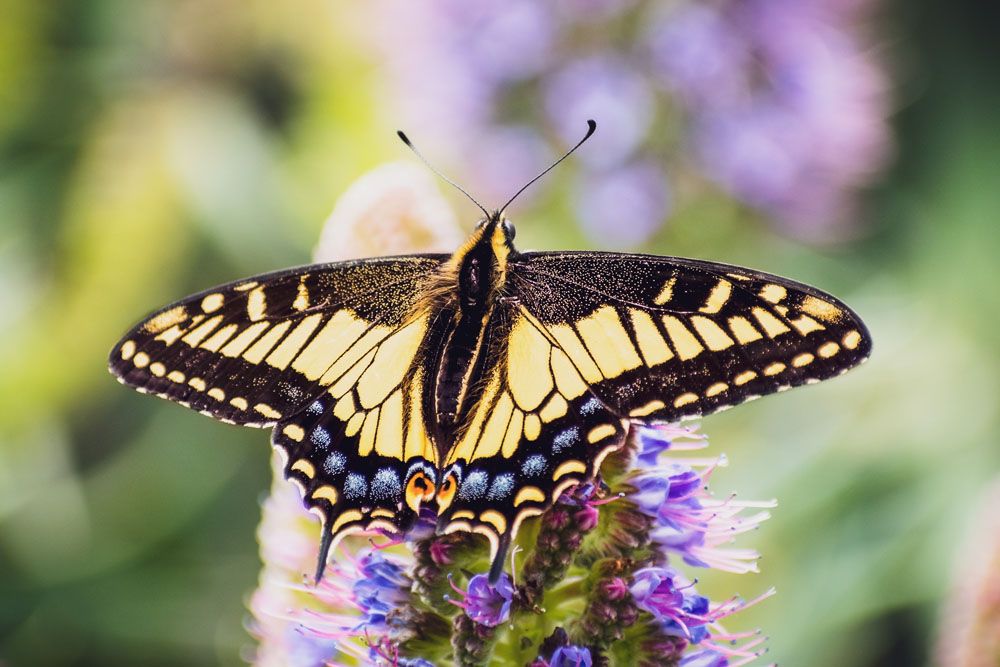
Western Swallowtail – Papilio rutulus
Western Swallowtail – Papilio Rutulus
Scientific Name: Papilio Rutulus
Common Name: Western Swallowtail
Distribution: Western North America is home to this widespread species. The majority of western North America is included in the usual range of the western tiger swallowtail, which stretches from British Columbia and North Dakota in the north to Baja California and New Mexico in the south. Rarely, individuals may be found east of this range; however, in eastern North America, Papilio glaucus, the identical eastern tiger swallowtail, has supplanted it.
Host plants: The striking black and yellow wings of the common butterfly, the western tiger swallowtail, resemble tiger stripes, thus the name. This species may be found all the way from southern New Mexico to British Columbia. Although their preferred habitat is forests near rivers and streams, western tiger swallowtails can also be found in parks, forested suburbs, roadside areas, and even your home!
Identification: The wingspan of Papilio Rutulus is 7 to 10 cm (3 to 4 in). These enormous butterflies have vivid colors. Yellow wings with black stripes and orange and blue dots close to the tail. On their hindwings, they exhibit the characteristic “tails” that swallowtails frequently have. When a caterpillar is young, it looks like bird droppings. However, when it molts, it finally turns brilliant green and has two huge yellow eyespots with blue and black pupils. The chrysalis resembles a piece of wood and is green in the summer and dark brown in the winter.
Life Cycle: Every year, one flight. Males usually wait for receptive females to mate by patrolling canyons and hilltops near water pools near rivers and streams. On the underside of leaves of host plants, females will deposit glossy green eggs, from which the larvae (caterpillars) will hatch and feed on the leaves. After that, they will hibernate during the winter as brown, wood-like chrysalides that hang from branches and tree trunks. In more northern areas, they emerge as butterflies in February (California) and May, June, or July, depending on the temperature. A butterfly only has a 6–14-day life span.
Usually, the undersides of the leaves of cottonwood, willow, and quaking aspen trees are where the females deposit their eggs. Up to 100 eggs can be laid by females, and the larvae hatch from the eggs in about four days. The reason why young larvae resemble bird droppings is to shield themselves from potential predators. Before pupating, the larvae may molt up to five times. The butterfly will emerge about two weeks after the caterpillar pupates; if this is the final life cycle of the fall, the pupae won’t emerge as a butterfly until spring.
Damage: The leaves of cottonwood trees, aspen (Populus), willows (Salix), wild cherry (Prunus), and ash (Fraxinus) are consumed by larvae (caterpillars). The nectar of several blooming plants, including thistles, butterfly bushes, sages, lavender, anise, catmint, and many more, is consumed by adult butterflies.
Management: None noted.
